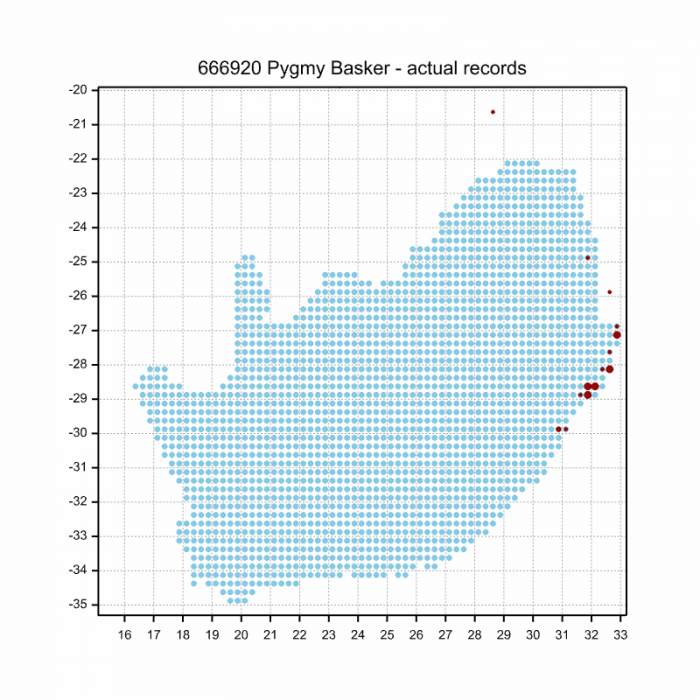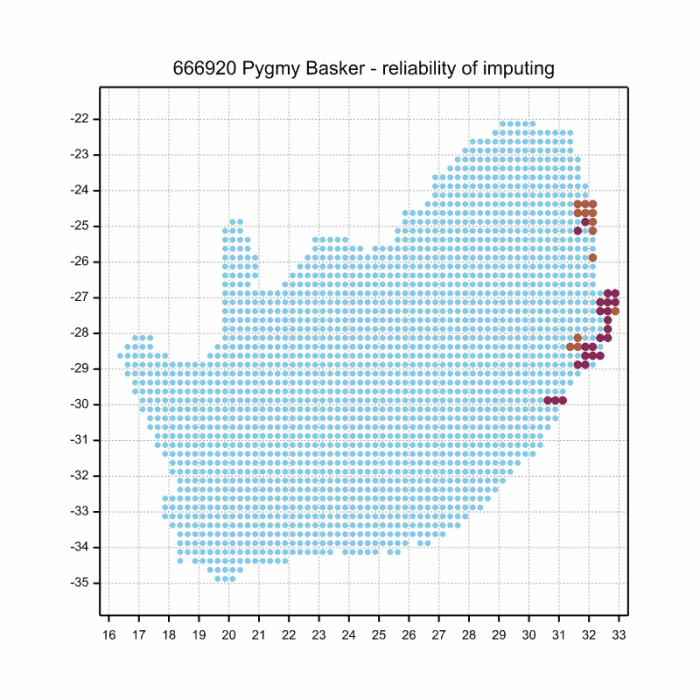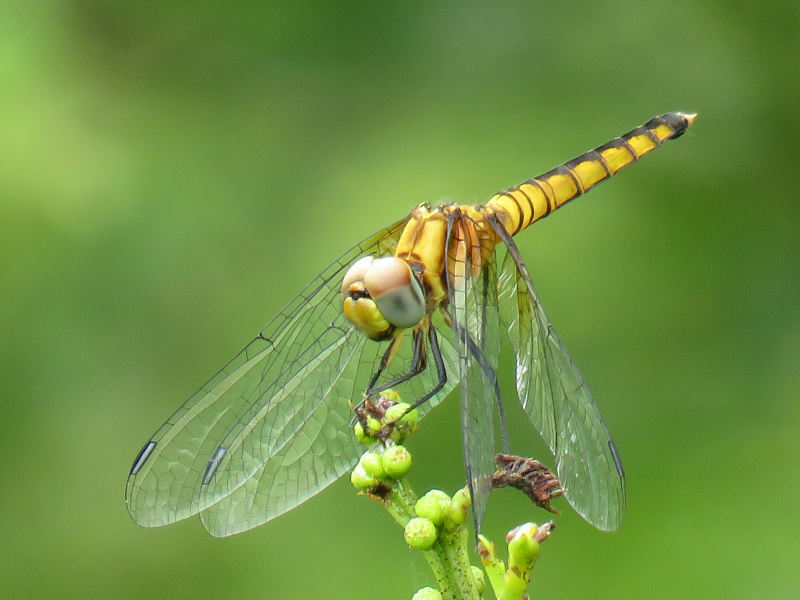View the above photo record (by Diana Russell) in OdonataMAP here.
Find the Pygmy Basker in the FBIS database (Freshwater Biodiversity Information System) here.
Family Libellulidae
Aethriamanta rezia – PYGMY BASKER
Kirby, 1889
Identification
Very small size
Length up to 29mm; Wingspan attains 47mm.
Both sexes are distinctive and easily recognisable.
Most similar to Macrodiplax cora (Coastal Pennant). That species is larger and has differently shaped markings along the top of the abdomen. In addition Macrodiplax cora has far less amber in the hind wings.
Click here for more details on identification of the Pygmy Basker.

Okavango Delta, Botswana
Photo by Ryan Tippett

Okavango Delta, Botswana
Photo by Ryan Tippett
Habitat
Primarily a coastal species in South Africa. Inhabits sedge and water lily filled ponds and pans on floodplains and in marshes. They are also found at richly vegetated oxbow ponds along meandering rivers and streams. Found in both grassland and forested environments, provided there is suitable aquatic habitat.

Photo by Ryan Tippett
Behaviour
Adult males perch prominently on sedge and reed stems over the water. Females and immature males are mostly found away from the water perched on bushes and trees.
Most active from October to April (see Phenology below).
Status and Conservation
Overall, an uncommon species in South Africa. It is listed as of Least Concern in the IUCN Red List of Threatened Species. It is found mostly in undisturbed habitats and is not very tolerant of habitat degradation.
Distribution
Widespread throughout the wetter parts of sub-Saharan Africa. Occurring from, Senegal across to Kenya and down to South Africa. It is also found in parts of northern Madagascar. In South Africa it is mostly restricted to the NE coastal plain of KwaZulu-Natal.
Below is a map showing the distribution of records for Pygmy Basker in the OdonataMAP database as at February 2020.

The next map below is an imputed map, produced by an interpolation algorithm, which attempts to generate a full distribution map from the partial information in the map above. This map will be improved by the submission of records to the OdonataMAP section of the Virtual Museum.


Ultimately, we will produce a series of maps for all the odonata species in the region. The current algorithm is a new algorithm. The objective is mainly to produce “smoothed” maps that could go into a field guide for odonata. This basic version of the algorithm (as mapped above) does not make use of “explanatory variables” (e.g. altitude, terrain roughness, presence of freshwater — we will be producing maps that take these variables into account soon). Currently, it only makes use of the OdonataMAP records for the species being mapped, as well as all the other records of all other species. The basic maps are “optimistic” and will generally show ranges to be larger than what they probably are.
These maps use the data in the OdonataMAP section of the Virtual Museum, and also the database assembled by the previous JRS funded project, which was led by Professor Michael Samways and Dr KD Dijkstra.
Phenology


Further Resources
Virtual Museum (OdonataMAP > Search VM > By Scientific or Common Name)
More common names: Dwergsonvangertjie (Afrikaans)
Type Locality: Madagascar, no locality data available.
Recommended citation format: Loftie Eaton. M; Hofmeyr S; Tippett RM; Underhill L. Pygmy Basker Aethriamanta rezia. Biodiversity and Development Institute. Available online at http://thebdi.org/2020/06/12/pygmy-basker-aethriamanta-rezia/

